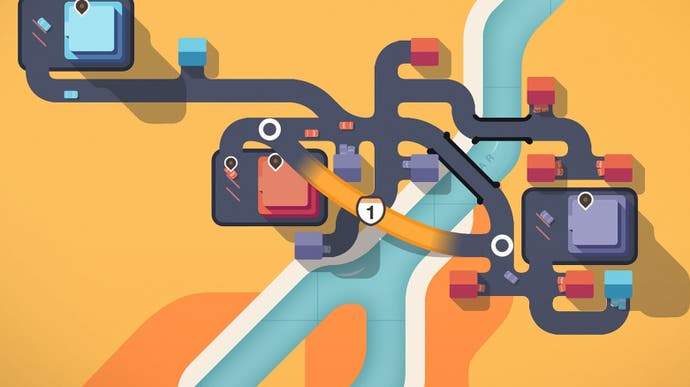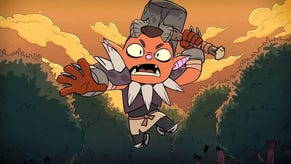Mini Motorways is the gloriously organic sequel to Mini Metro
My way or the iWay.
Hello! This week we're going to be looking at some of the games that are now available on Apple Arcade. First up is something that already feels like a bit of a classic.
I've been reading about the endocrine system recently. It's all completely fascinating. I'm used to the nervous systems by now, these huge networks of messages zipping back and forth around the body, electricity hopping between nodes and the atomiser kiss of synapses firing. But then here's a separate network and separate messages: hormones, glands, slower and somehow more tidal.
This stuff has folded itself into my thoughts on Mini Motorways, I think. Mini Motorways is the follow-up to Mini Metro, an absolute classic that sees players coaxing subway systems to life from a few nodes and a few lines of colour. Deep down it's about managing the flow: making sure stations don't fill up with passengers, making sure everyone gets where they want to go fairly briskly.
Mini Motorways is very similar - at least on the surface. You still have to connect nodes together to get people from A to B, the whole thing's still gorgeously sparse and accompanied by a soundtrack of humming, clicking, pinging and shuffling, even the camera works the same way, steadily moving outwards as your network grows, yet at some magical pace you can never actually notice.
But motorways are a different kind of network to subways. They abstract differently. And they ask different things of you. I am still learning just what they ask, and even so, I am already deeply in love.
Real talk: it feels wrong to play this game on any map other than Los Angeles. Los Angeles is where motorways have found their truest expression, I think, in the spaghetti tangles, sure, but in those sinuous arcing elevated roads, too, soaring through canyon and subdivide, taking you forward towards a centre that, as a friend once pointed out, is always suggesting itself while never actually appearing.
So load up Los Angeles and start connecting. There are big buildings, which I think are called stores. They connect to small buildings, which are houses. Such is the elegance of the design that the pitched roof of a house can be suggested by two coloured strips and nothing else, while the heft of a store is delivered through its surprisingly large shadow. Anyway: houses can connect to roads from any angles, but stores can only connect from one or two points. Houses must bend to the stores' wills, in other words, and these things will shape the layout of the city.
And it is the layout of the city. Subways, travelling beneath the surface of things, often hint at the shape of a place, but they do not really give a true sense of its warp and weft. Does London really look like a bottle laid on its side as the tube map suggests? But in Mini Motorways you are drawing the surface of things to a much greater extent. Connecting coloured houses to the same colour of store requires a trip into the build mode, where graph paper overlays everything and roads are prodded into existence in a way that's much busier than the easy lines of Mini Metro. Those lines were basically the nodes they were connecting. Here, a road must go around a house, around a store. It must curve to avoid other things. I end up with a lot of rib cages, a lot of clavicles. The network looks organic.

The end-game is the same, though. Every week you get a new choice of pieces to play with: extra roads, traffic lights, bridges, motorways themselves, which can soar over the normal streets connecting distant points for when you're really in a jam. A good city will have lots of cars of different colours buzzing around really good, useful roads that offer a range of destinations. Clogging, however, is still death: people stuck at a store with no way out, getting angrier and angrier until the game is over.
It's fascinating that a game that feels so similar to Mini Metro should feel so different to play. In Metro speak, this one is all about the lines, where they go and how much stuff you have to extend them. To switch between Motorways and Metro is like trying to learn two languages at once when you're already well into middle-age. But to play them separately in extended sessions is to see how simple ideas like connecting people and places are not that simple at all. You can approach them in different ways - and in doing so you will reap different pleasures.






.png?width=291&height=164&fit=crop&quality=80&format=jpg&auto=webp)



